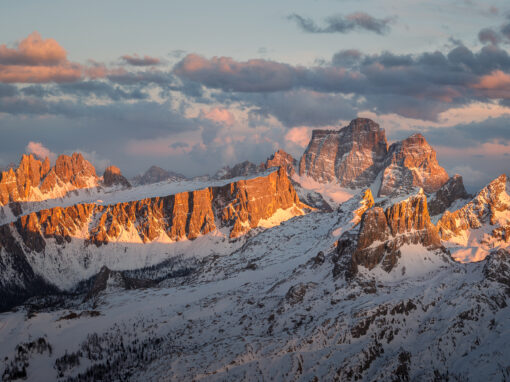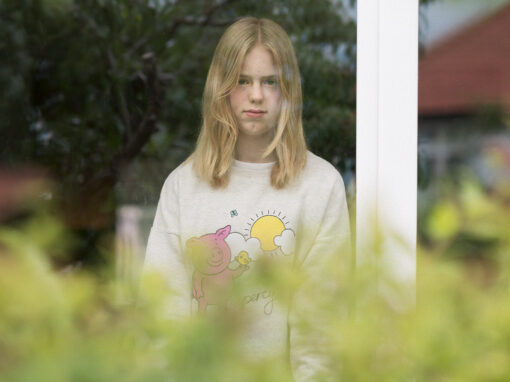Rob Wilson examines the work and legacy of Raghubir Singh.
When one thinks of colour images of India, I imagine that many a photography viewer’s thoughts will recall the photographs of Steve McCurry, but which ones? Is it the boy running and jumping through the back streets of Varanasi or the train in front of the Taj Mahal? How about the group of women, dressed in red, huddled together in a dust storm? Could it be the man, neck-deep in water, carrying his sewing machine or the Kashmiri flower seller rowing his boat? I love all these McCurry images and more, but when I think of colour photographs of India, it is the work of Raghubir Singh that comes to mind first.
Singh wanted to produce photographs that were uniquely Indian. In his introductory essay to River of Colour: the India of Raghubir Singh, he noted his admiration for luminaries such as Robert Frank, Bill Brandt, Diane Arbus and, most of all, Henri Cartier-Bresson, but believed that monochrome photography was not entirely appropriate for creating images of India. He stated that, “The true Indian artist cannot ignore the blessing of colour…” (1) , and this was a blessing that he most certainly did not ignore.
The placement of Singh’s work alongside that of McCurry creates a clear distinction. McCurry’s India is one of portraits, trains, bicycles, and the Taj Mahal. These are photographs that are quite formal in their composition and arguably sometimes reinforce Western stereotypes. For all their undeniable beauty, McCurry’s pictures are unavoidably those of an eternal outsider looking in. There is no feeling that he is ever part of the action. He is an observer who is distanced from the events in front of him. Singh’s work, on the other hand, is that of the insider looking outwards from the centre of the action. India comes alive here and he draws the viewer in.
Singh’s images are energetic and reflect the chaotic life taking place of the streets around him. His work encapsulates four decades of a country and all its faces. His India is a vibrant place, but it is not one that simply reflects a stereotype of poverty. That is not to say that his work does not include the clichés of India that Western viewers expect. His portfolio contains chaiwallahs, rickshaws, gods, street dwellers, and sadhus. However, society weddings, maharajahs, luxury cars, celebrities, politicians, and protests are there too. There are few photographs that would be recognised as formally posed portraits. Singh’s work gives the impression that he simply strolled into the middle of the action, clicked his shutter, and then continued to the next thing that piqued his interest.

For me, two of his images stand tallest. One is Pilgrim and Ambassador Car, Kumbh Mela, Prayag, Utter Pradesh, 1977. In it, a lone pilgrim sits with head bowed by the front wheel of a red Ambassador. The image’s effect is striking. The car glows in what appears to be the early morning light and contrasts brilliantly with the brown desert world in which it sits. You wonder whether the pilgrim is perhaps contemplating the role and value of this ubiquitous and distinctly Indian vehicle. Whatever he is thinking, he is alone with his thoughts and away from the heaving crowds that are associated with the Kumbh Mela. The picture is quieter and more contemplative than most of Singh’s output but shows him to be comfortable with whatever photographic challenge that is placed in front of him.

For me, the second image further demonstrates his ability to deal with any challenge and is the pinnacle of his visual achievements. This is his masterpiece and I would argue that there are few, if any, better pictures of India. Monsoon Rains, Monghyr, Bihar, 1967 is an extraordinary photograph. I first saw this image in London at an exhibition of outstanding photography from the 1960s and 70s, and it stopped me dead. The exhibition was full of wonderful work, but no other picture had the same impact. The composition combined with the use of colour and movement are near perfect. When I look at it, I can feel the tribulations and discomfort of the women in the overwhelming, yet always longed for, rain. There is a tactile quality here that few other photographs genuinely possess. If I touch the image, my hand gets wet. As a picture of rain, I believe it has no rival.
Singh died from a heart attack in 1999 at the relatively young age of 56 and was arguably at the peak of his creative powers. In the years since his death, he has been increasingly recognised as one of the great photographers of India and a genuine pioneer in helping colour photography achieve recognition within the fine art canon. Yet, the story does not end there.
In researching this article, I discovered that Jaishri Abichandani, an artist and founder of the South Asian Women’s Creative Collective, has accused Singh of a sexual assault that was alleged to have happened during her time working as his assistant in the 1990s. This accusation led to protests at exhibitions of his work at New York’s Metropolitan Museum and Toronto’s Royal Ontario Museum (2).
Singh is no longer here to answer the accusation, so where does this leave us, the viewer? The art world has a chequered history in its dealings with individuals who ranged from the highly unpleasant to the downright murderous. For example, Caravaggio was a killer, the sculptor Cellini a murderer with multiple victims (3). Singh’s legacy as a human being is certainly open to doubt as we have no reason to disbelieve Ms Abichandani, but the questions each viewer must answer are whether we still want to look at the photographs and whether, in light of the accusation, their value has been diminished.
(1) River of Colour: the India of Raghubir Singh, p8
(2) https://www.thestar.com/entertainment/visualarts…
(3) https://www.theguardian.com/artanddesign…
Featured image: Raghubir Singh – Pavement Mirror Shop, Howrah, West Bengal, 1991





Nigel Walker
June 11, 2020 at 11:30
A very insightful introduction to Singh’s work and an interesting dilemma that it leaves us with at the end. I certainly agree with your comments on the Monsoon Rains photo which I hadn’t seen before. Thanks
Robert Wilson
June 11, 2020 at 19:04
Thank you!
Francine
June 11, 2020 at 15:40
Really loved your text and I am delighted to have discovered this photographer unknown to me up to this day. I agree with you about the ´Monsoon Rains’ which is just simply incredible. It definitely makes me want to see more of his work and books.
Robert Wilson
June 11, 2020 at 19:05
Glad you enjoyed it! Thank you!
Tom
June 20, 2020 at 17:13
I was not familiar with Singh‘a work. Now that you’ve piqued my interest, with the examples of his work, and your well-written article, I will seek him out.
Robert Wilson
June 26, 2020 at 19:50
Thank you Tom!
Robert Wilson
June 22, 2020 at 17:43
That’s great to hear! You can find quite a lot of his books second hand in online stores.
Enjoy and thank you!